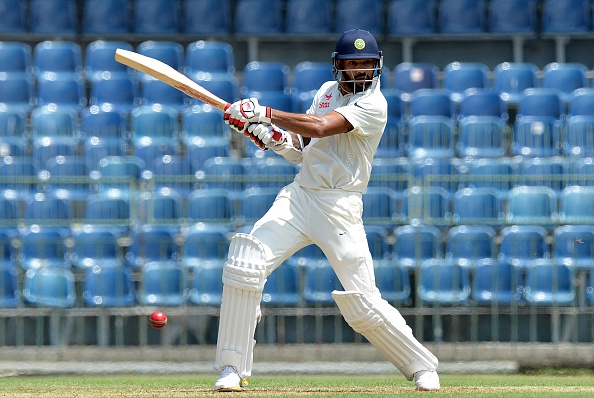Why Shikhar Dhawan should be India's preferred opener in Tests

Getty Images
Shikhar Dhawan made a scintillating return to the Indian Test team scoring a 168-ball 190 to put India into a commanding position by finishing the first day with 399/3 on the board. Dhawan opened the innings for India after a gap of almost two years as the position owned by Murali Vijay.
Shikhar Dhawan was included in the Indian Test team after Murali Vijay was ruled out of the series with a wrist injury. The Delhi batsman latched onto the opportunity and made an impact on the game straight away. However, the southpaw had been struggling with form and injuries which delayed his comeback into the side. Dhawan's struggle for form started in December 2013 - the same year he made a record breaking debut for India - when the Men in Blue toured South Africa where he found runs hard to come by. The 30-year old's form continued to play hide and seek in the following series and after scoring 134 at Galle he injured his elbow which led to his exit from the team.
On the other hand, Murali Vijay has played a pivotal role in India's surge to the top spot in Test rankings owing to his consistent performances for the team at the top of the order, both home and away scoring nine centuries and fifteen fifties in the process. Meanwhile, KL Rahul emerged as India's second opener following his splendid performances with the bat at the top averaging 44.44 with four centuries and seven half-centuries to his name.
KL Rahul has surely cemented his place as the opener in the Test team courtesy his splendid record and exceptional average, but whether Vijay or Dhawan should start the proceedings alongside Rahul is debatable. Let's take a look at some of the factors that give Dhawan a competitive edge over his compatriot.
Vijay and Dhawan both average almost the same in Tests scoring 39.62 and 38.52 per innings respectively, but if Dhawan's 190 that he scored in the Galle Test recently is considered his average rises to 42.41. Vijay has played 87 innings in the all whites that have helped him score nine hundreds to Dhawan's 5 who has played just 40 innings.
The Delhi batsman timed the ball sweetly throughout his innings helping India to score 167 runs in the second session of the day with his contribution being 126. With the explosive innings, Dhawan's aggregate strike rate in Tests has gone up to 63.37 as opposed to Vijay's 46.30.
Though strike rate is not considered to be a notable measure of a batsman's capability in Tests it can indeed play a crucial role in getting the match to a conclusive end. Dhawan's splendid 190 ensured India finished in a commanding position scoring a colossal 399 on day 1 and eventually paved the way for them to score 600 in their first innings. It is a big advantage for India who could capitalize on the score and could force the hosts to follow on tilting the result of the match in India's favour.
Even while batting second, Dhawan's mindset could come in handy for India who could take a lead in any match at the earliest owing to his explosive batting style which will put pressure on the opposition straight away.
Furthermore, another aspect that is lifted up by Dhawan's fast-paced innings is the innings of the batsman at the other end. Dhawan's merciless hitting would help the batsman at the other hand to take his time and get his eye in the game by just merely rotating the strike. The batsman could take the time to come in his own element and fire on his own accord. The best instance of this theory was Cheteshwar Pujara's 153-run innings. The Saurashtra batsman took a backseat while Dhawan was dictating the terms of the game, but came out all guns blazing after the opener's departure forging another 100-run partnership with Ajinkya Rahane.
However, Murali Vijay has been India's biggest asset in Test cricket and not utilising his services would be not doing justice to his talent. Vijay can be pushed down the batting lineup which would further strengthen the middle order. Moreover, having Vijay in the middle order would favour him and India in two ways. Firstly, the middle order would allow Dhawan to play freely at the top which has proven effective for the Delhi batsman and advantageous for the Indian team. Secondly, Vijay himself could enjoy playing down the order released from the burden of getting India a strong start and away from the danger of the new swinging ball.
Based on these facts Dhawan is entitled of at least a few more chances beyond the Sri Lanka series and he will surely have to cement his place at the helm of the Indian batting order by getting chunks of runs under his belt.
The potential batting line up could be :
Shikhar Dhawan
KL Rahul
Virat Kohli
Cheteshwar Pujara
Murali Vijay
Wridhiman Saha
Ravichandran Ashwin
Ravindra Jadeja
Mohammed Shami
Umesh Yadav
